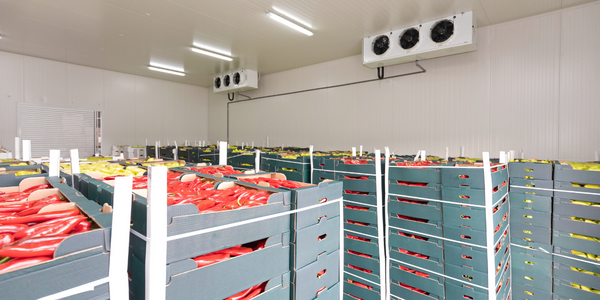公司规模
Large Corporate
地区
- America
国家
- United States
产品
- AgileAssets® Pavement Analyst™
技术栈
- Predictive Modeling
- Geographic Information System (GIS)
实施规模
- Enterprise-wide Deployment
影响指标
- Cost Savings
- Productivity Improvements
技术
- 分析与建模 - 预测分析
适用行业
- 运输
适用功能
- 物流运输
- 维护
用例
- 基础设施检查
- 预测性维护
服务
- 数据科学服务
关于客户
The Texas Department of Transportation (TxDOT) is a government agency in the U.S. state of Texas. TxDOT is responsible for maintaining 80,444 centerline miles of roadways and inspecting 54,180 bridges located in its 25 highway districts. The state sees 197.4 billion annual vehicle miles traveled (VMT) on state-owned highways, making it not only the largest, but also one of the most heavily traveled networks in the United States. TxDOT's mission is to deliver a safe, reliable, and integrated transportation system that enables the movement of people and goods. The department is also responsible for planning and executing transportation and traffic management systems, developing transportation plans and programs, maintaining and enhancing the state's transportation system, and implementing transportation safety programs.
挑战
The Texas Department of Transportation (TxDOT) manages one of the largest and most heavily traveled road networks in the United States, with 80,444 centerline miles of roadway and 54,180 bridges located in its 25 highway districts. The state sees 197.4 billion annual vehicle miles traveled (VMT) on state-owned highways. Maintaining statewide transportation assets and providing a high-quality road system are vital for the state’s economy and public safety. To contain the costs of managing its road network, TxDOT applies innovative asset lifecycle management strategies to preserve and restore the condition of roadway assets. Texas legislation requires that TxDOT annually provide the state’s Legislative Budget Board and the Governor with a detailed plan for the use of transportation funds. The plan must include pavement condition targets and a district-by-district analysis of how proposed maintenance spending will impact pavement scores.
解决方案
TxDOT uses the advanced analytical capabilities of AgileAssets® Pavement Analyst™, the state’s pavement management system (PMS) of record, to develop a 4-year pavement management plan and to update the plan during each year of its scope. Using predictive modeling, Pavement Analyst helps to forecast the future condition of pavements and to assess the impact of funds allocated to pavement projects. Relying on Pavement Analyst’s geographic information system (GIS) functionality and integration with multiple databases— including construction, maintenance, and crash data—TxDOT team members can map various combinations of projects, pavement condition scores, and traffic information to obtain comprehensive insights and identify planning options. With Pavement Analyst’s advanced analytics and reporting capabilities, TxDOT can generate robust, data-driven 4-year plans that meet legislative requirements, funding constraints, and departmental goals.
运营影响

Case Study missing?
Start adding your own!
Register with your work email and create a new case study profile for your business.
相关案例.

Case Study
Airport SCADA Systems Improve Service Levels
Modern airports are one of the busiest environments on Earth and rely on process automation equipment to ensure service operators achieve their KPIs. Increasingly airport SCADA systems are being used to control all aspects of the operation and associated facilities. This is because unplanned system downtime can cost dearly, both in terms of reduced revenues and the associated loss of customer satisfaction due to inevitable travel inconvenience and disruption.

Case Study
IoT-based Fleet Intelligence Innovation
Speed to market is precious for DRVR, a rapidly growing start-up company. With a business model dependent on reliable mobile data, managers were spending their lives trying to negotiate data roaming deals with mobile network operators in different countries. And, even then, service quality was a constant concern.

Case Study
Digitize Railway with Deutsche Bahn
To reduce maintenance costs and delay-causing failures for Deutsche Bahn. They need manual measurements by a position measurement system based on custom-made MEMS sensor clusters, which allow autonomous and continuous monitoring with wireless data transmission and long battery. They were looking for data pre-processing solution in the sensor and machine learning algorithms in the cloud so as to detect critical wear.

Case Study
Cold Chain Transportation and Refrigerated Fleet Management System
1) Create a digital connected transportation solution to retrofit cold chain trailers with real-time tracking and controls. 2) Prevent multi-million dollar losses due to theft or spoilage. 3) Deliver a digital chain-of-custody solution for door to door load monitoring and security. 4) Provide a trusted multi-fleet solution in a single application with granular data and access controls.

Case Study
Vehicle Fleet Analytics
Organizations frequently implement a maintenance strategy for their fleets of vehicles using a combination of time and usage based maintenance schedules. While effective as a whole, time and usage based schedules do not take into account driving patterns, environmental factors, and sensors currently deployed within the vehicle measuring crank voltage, ignition voltage, and acceleration, all of which have a significant influence on the overall health of the vehicle.In a typical fleet, a large percentage of road calls are related to electrical failure, with battery failure being a common cause. Battery failures result in unmet service agreement levels and costly re-adjustment of scheduled to provide replacement vehicles. To reduce the impact of unplanned maintenance, the transportation logistics company was interested in a trial of C3 Vehicle Fleet Analytics.

Case Study
3M Gains Real-Time Insight with Cloud Solution
The company has a long track record of innovative technology solutions. For example, 3M helps its customers optimize parking operations by automating fee collection and other processes. To improve support for this rapidly expanding segment, 3M needed to automate its own data collection and reporting. The company had recently purchased the assets of parking, tolling, and automatic license plate reader businesses, and required better insight into these acquisitions. Chad Reed, Global Business Manager for 3M Parking Systems, says, “With thousands of installations across the world, we couldn’t keep track of our software and hardware deployments, which made it difficult to understand our market penetration.” 3M wanted a tracking application that sales staff could use to get real-time information about the type and location of 3M products in parking lots and garages. So that it could be used on-site with potential customers, the solution would have to provide access to data anytime, anywhere, and from an array of mobile devices. Jason Fox, Mobile Application Architect at 3M, upped the ante by volunteering to deliver the new app in one weekend. For Fox and his team, these requirements meant turning to the cloud instead of an on-premises datacenter. “My first thought was to go directly to the cloud because we needed to provide access not only to our salespeople, but to resellers who didn’t have access to our internal network,” says Fox. “The cloud just seemed like a logical choice.”







